As an Amazon Associate I earn from qualifying purchases.
You can read my full disclosure statement here.
Today we are going to be talking about how to freeze your green bean harvest, with tips on when to harvest your green beans, types of beans, to blanch or not, and more!
Beans are one of the easiest vegetables to grow. Therefore, it is a good idea to know how to preserve them so you can enjoy them for a long time to come, fresh out of your garden!
Preserving Your Green Beans
In this article, I will share a tutorial on how to freeze your green bean harvest. I think freezing green beans is the easiest way to preserve them, and the method that retains some of their crisp fresh flavor the best. We will also talk about other ways you can preserve beans. I will talk about each of these methods in more detail below.
The Easiest Way to Preserve Berries, Freeze Them!
The Benefits of Freezing Your Tomato Harvest
Quick No Cook Refrigerator Pickles
How to Preserve Pumpkins & Winter Squash by Roasting and Freezing
Our favorite Homesteading and Gardening tools in our Amazon Shop!
Our Garden Harvest Tally Spreadsheet is now available!
Fresh Green Beans vs Dry Shelling Beans
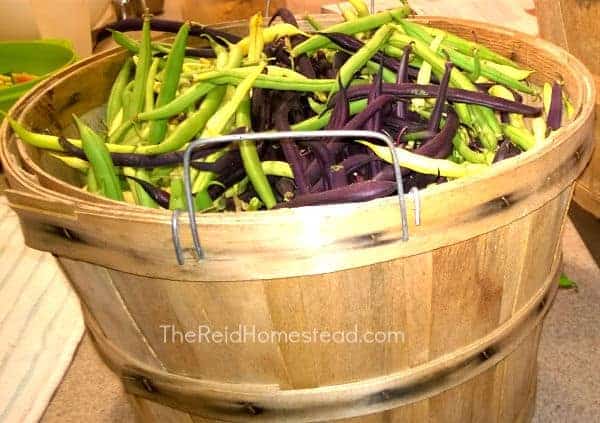
A bushel of assorted fresh green beans
Just to be clear, when I say green beans, I am talking about string beans vs dry beans. Varieties of string beans that I am talking about are Provider Green Beans, Yellow Wax Beans, Kentucky Pole beans and many others. These are also referred to as snap, green and wax beans.
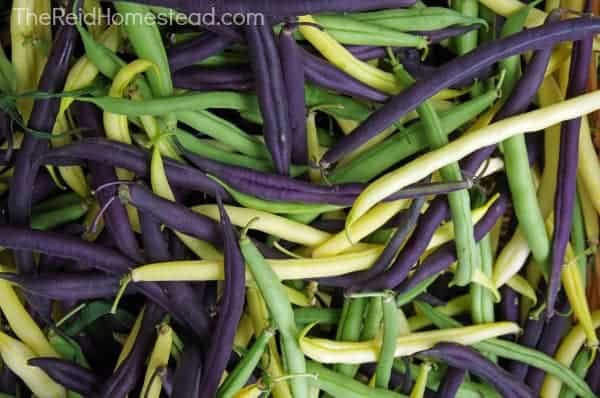
examples of 3 colors of string beans that are great for freezing
I am not referring to beans that you grow for dry shelling beans, such as Black Turtle Beans, Cannellini Beans, Pinto Beans or Dark Red Kidney Beans. Dry Shelling Beans, are grown for the seed inside the string bean, whereas string beans, are grown for the whole bean , where you eat the shell and the seed beans inside.
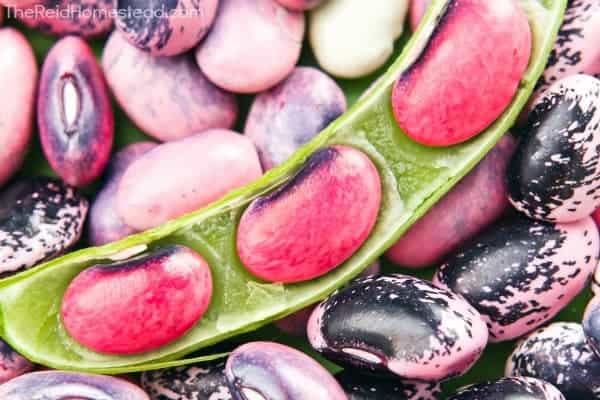
photo showing dry beans vs string beans
Preserving Dry Shelling Beans
These are the easiest beans of all to preserve. You let the beans dry out, either while still in the garden, or if you are expecting a frost, pick the whole plant and bring into a dry place like a garage. Once the plant has dried up, you just shell the beans, and collect the seed. The seed is the actual dry bean. Some examples you might be familiar with are kidney beans, white cannellini beans, pinto beans, black beans, etc.
Once the seed beans are completely dry, you can store them in jars in a cool dark place for at least a year or two. Than soak before using, or pressure can a large lot of them to have them at the ready for quick cooking.
How to Freeze Green Beans
Choosing Beans for Freezing
To easily preserve the fresh string beans by freezing, you want to pick them when they are young. Do not wait until the beans are bulging from the seed inside them or they will be tough and chewy. Pick them when they are long and slender.
Wash them thoroughly to remove any dirt or debris. It is a good habit to mulch around the beans with straw or woodchips, to prevent the dirt from splashing up onto the plants when it rains or when you water from overhead. If mulched, the beans remain much cleaner.
After washing them thoroughly, cut off the stem end, and cut them into 1-2" pieces.
Blanching Green Beans for Freezing
Most veggies require a quick blanch before being frozen, at least that is what is recommended by the National Center for Home Food Preservation. Blanching is just submersing them in boiling water for a few short minutes, and then putting them quickly in an ice water bath to stop the cooking process.
The blanching process helps to retain the vegetable color, flavor, and nutrients and it also kills off enzymes that are beginning to break down the vegetables and also kills any surface organisms that might still be there after washing them.
When blanching green beans for freezing, you want to bring a large pot of water to a rolling boil, using 1 gallon of water per 1 pound of prepared vegetables. At the same time you are waiting for the water to boil, fill a large bowl with ice cold water, and ice cubes.
When the boiling water and ice water bath are ready, place beans in a colander that you can gently sink into the boiling water. (I found this colander on amazon and it is perfect for this. I use it for all kinds of food preservation projects but especially for blanching veggies like beans, peas, broccoli, cauliflower, carrots, etc.)
The water should return to a full boil within 1 minute. If it doesn't, you are putting too many vegetable into too small an amount of water. Begin timing when the water returns to a full boil, and time for 3 minutes.
After 3 minutes, remove colander and beans from boiling water, and immediately place into the ice water bath.
Many people also freeze green beans without blanching. This is a personal preference. Try it both ways, to see which method your prefer!
Preparing the Beans for their First Freezing
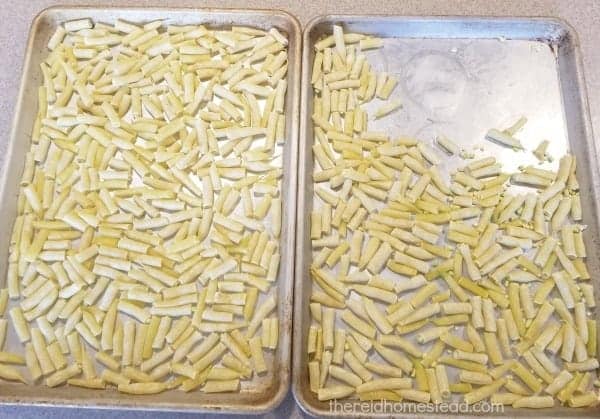
Cookie sheets with a single layer of beans go in the freezer first
After the beans have cooled off, and are cool to the touch, remove them from the ice water bath. I like to have some towels laid out at this point and dump the beans onto the towels. Move the beans around so they are mostly laying in a single layer and then gently roll the towel up with the beans inside, to remove most of the excess water.
Once they are dry, move them onto a cookie sheet, or a few cookie sheets, if you have a lot. Make sure they lay in a single layer, and do not touch. Place the cookie sheets in the freezer until the beans are frozen.
This step of drying them in a single layer on the cookie sheet, prevents them from freezing into one large clump of frozen beans. By freezing them individually first, they remain loose when freezing them in bags in the next step.
Storing the String Beans in the Freezer
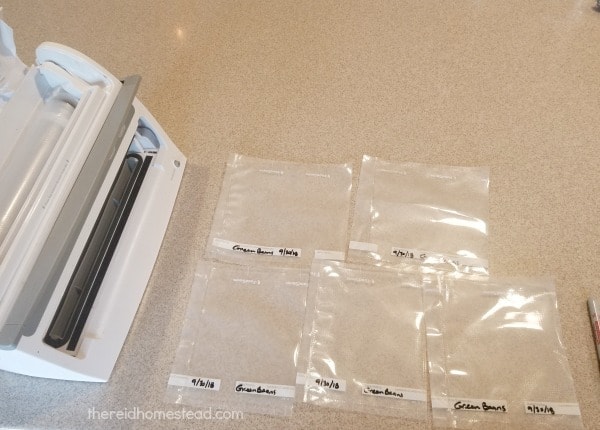
Getting my food saver and my food saver bags ready and labeled
When the beans are fully frozen, use a spatula to scoop them up off the cookie sheet. Then you need to place them into containers to store them in the freezer.
I prefer to use my Foodsaver for this, as it removes the air from the bags which eliminates freezer burn. Other options are zip lock bags or plastic or glass containers, but they will not store for as long.
Don't forget to label and date your containers or bags, and be sure to use the oldest ones first. Now you can confidently say you know how to freeze your green bean harvest!
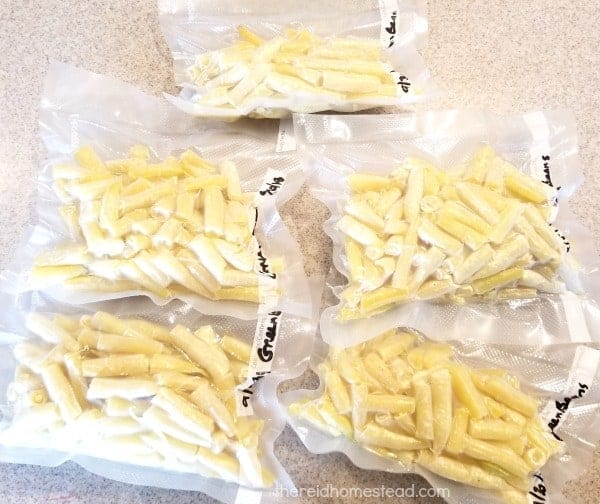
The bags are filled with the frozen beans off the cookie sheet, vacuum sealed, and ready to go in the freezer
Are you new to Canning?
If you are new to canning, and need a little guidance, consider getting these two handy guides that my friend Victoria has available:
Quick Start Guide to Water Bath Canning
Quick Start Guide to Pressure Canning
Also see my articles 15 Reasons Why You Should be Pressure Canning and Which Pressure Canner Should You Buy? (My review of the 2 most popular models!)
Preserving Your Green Bean Harvest by Canning
There are two different ways that you can preserve your green beans by canning. You can pressure can them with just a little salt in the water. Beans are a low acid food, so must be pressure canned to be safe. Or you can pickle them and make dilly beans using a water bath canner, the pickling brine is acidic enough to make this type of recipe safe in a water bath canner.
My friend Rachel has an excellent tutorial for canning beans over on her blog Grow a Good Life.
My friend Lisa has an excellent tutorial for dilly beans over on her blog The Self Sufficient HomeAcre.
Using Safe Food Preservation Procedures
I always encourage anyone interested in food preservation, to follow SAFE food preservation techniques. Many tutorials, how to videos, blog posts and recipes and other such resources found online are NOT safe. These methods are often passed down from generation to generation or are self made recipes. Please trust your source, especially when it comes to canning.
I will only share food preservation techniques that are outlined as safe from scientifically tested processes on this blog. For all things food preservation related, as all their procedures and guidelines are scientifically tested for safety, use this site:
The National Center for Home Food Preservation
When in doubt, check it out!
This post is part of the blogger roundup Preserving the Harvest.
Do you love preserving the harvest as much as we do? Click the links below and get detailed instructions for preserving 23 of the most popular fruits and vegetables
Preserving Vegetables (in alphabetical order)
How to Preserve Carrots by Freezing, Canning, and More from Oak Hill Homestead
4 Easy Ways to Preserve Cauliflower from Dehydrating Made Easy
Cucumber Fresh Pack Garlic Dill Pickles Recipe from The Self Sufficient HomeAcre
Make Your Own Garlic Powder and Other Ways to Preserve Garlic from Learning & Yearning
How to Freeze Your Green Bean Harvest from The Reid Homestead
How to Preserve Leafy Greens from Homespun Seasonal Living
Preserving Okra by Freezing, Canning, Fermenting, and Dehydrating from Schneider Peeps
5 Ways to Preserve Onions for Storage from Rockin W Homestead
How to Dehydrate Parsnips & Make Parsnip Chips from The Purposeful Pantry
3 Ways to Preserve Peppers from Grow a Good Life
5 Ways to Store Potatoes from A Modern Homestead
Ways to Preserve Radishes from The Purposeful Pantry
How to Freeze Squash (and Other Preservation Methods) from Our Inspired Roots
Freezing Tomatoes for Preserving Later in the Year from Stone Family Farmstead
3 Easy Ways to Preserve Zucchini from Grow a Good Life
Preserving Fruit (in alphabetical order)
Guide to Preserving Apples from Oak Hill Homestead
3 Ways To Preserve Fresh Summer Berries from Better Hens & Gardens
How to Make Cherry Jam from Scratch from The Self Sufficient HomeAcre
3 Quick Ways to Preserve Grapes from Homestead Lady
3 Best Ways To Preserve Mulberries from My Homestead Life
How To Preserve Oranges On The Homestead from 15 Acre Homestead
How to Freeze Peaches from A Modern Homestead
How To Preserve Strawberries On The Homestead from 15 Acre Homestead
Other Articles You May Be Interested In:
Seed Starting 101: Winter Sowing
7 Reasons You Should Be Growing Blue Jarrahdale Pumpkins
Why Are My Cucumber Leaves Turning Yellow?
Using Straw and Hay in the Garden
Natural Slug and Snail Control Methods
Want to Remember This?
Please Pin "How to Freeze Your Green Bean Harvest" to your favorite Gardening, Homesteading or
Food Preservation board on Pinterest!



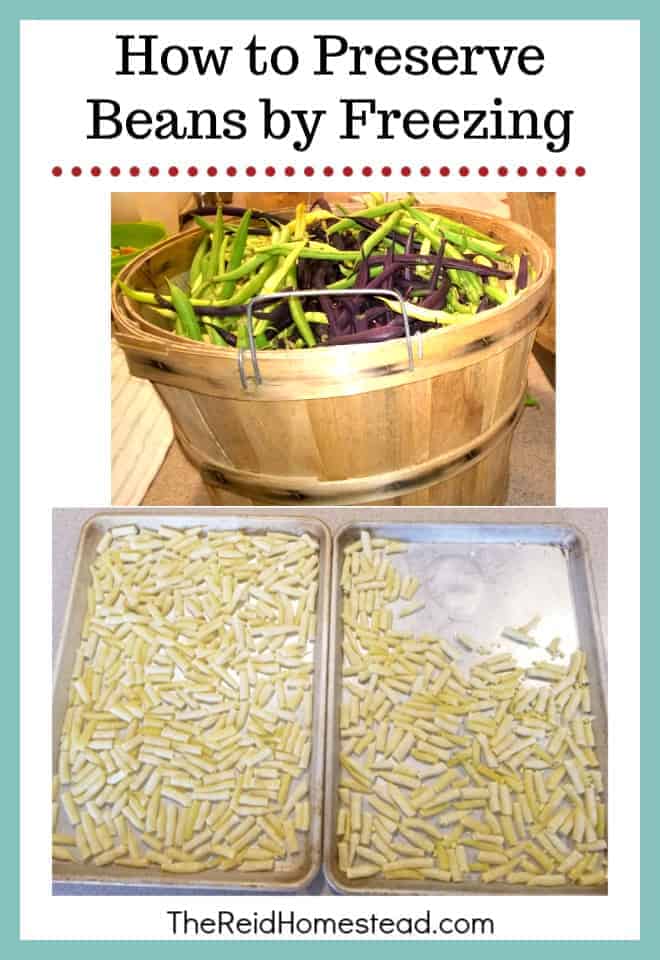
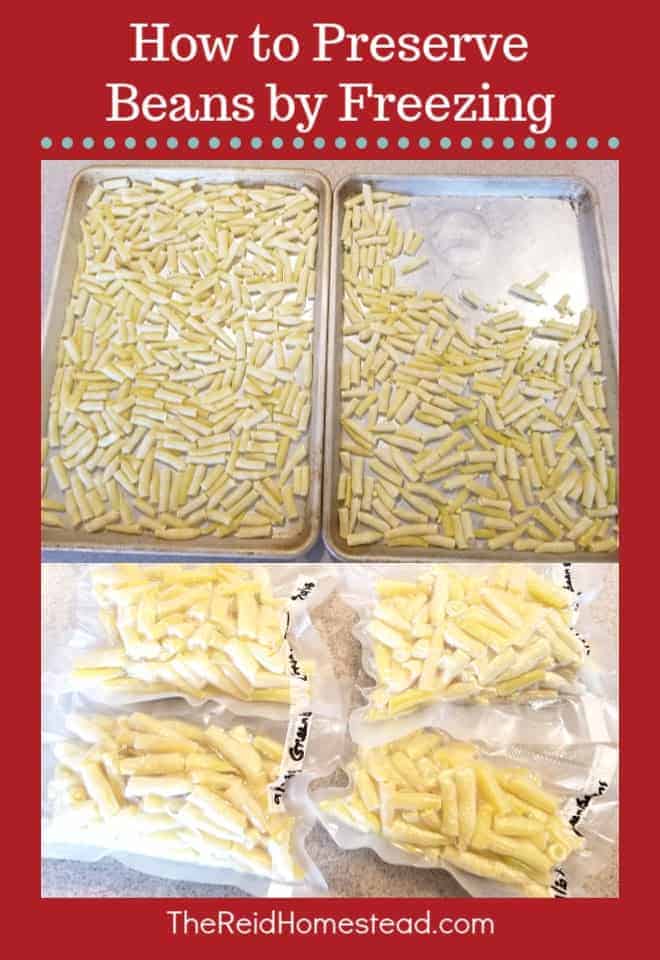
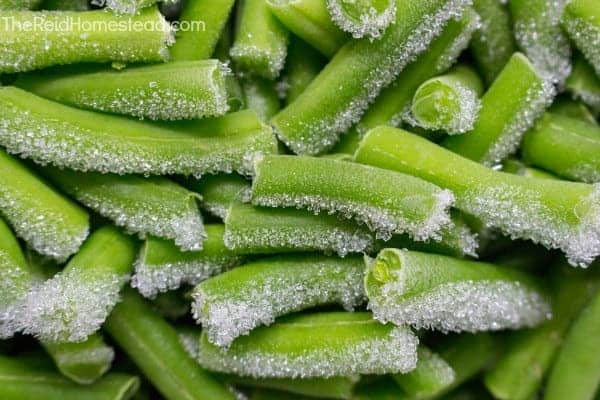
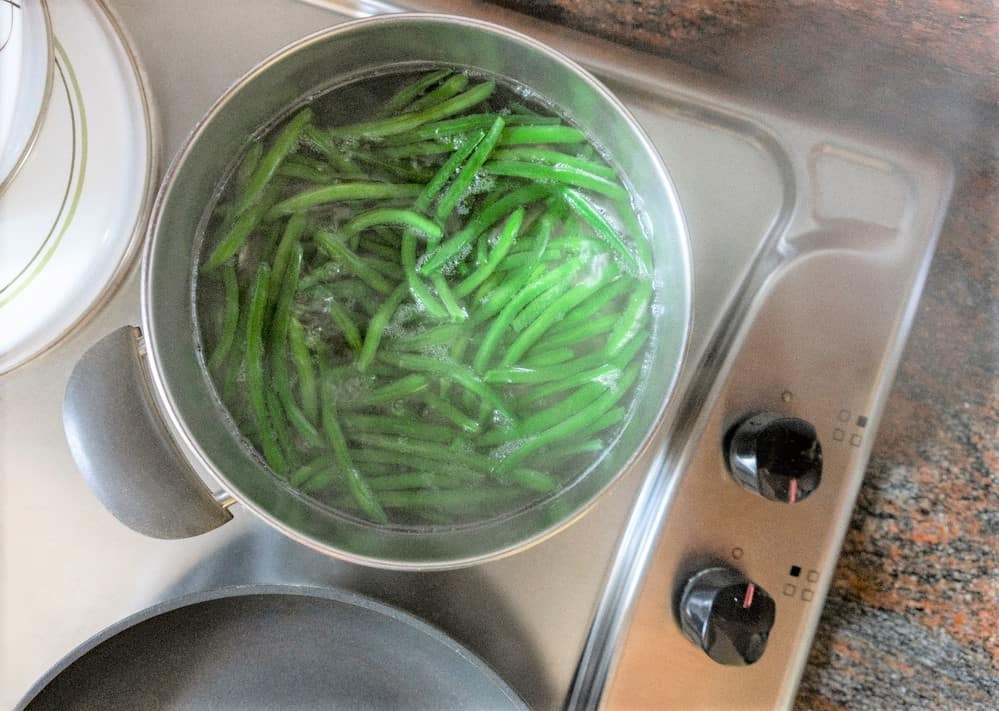

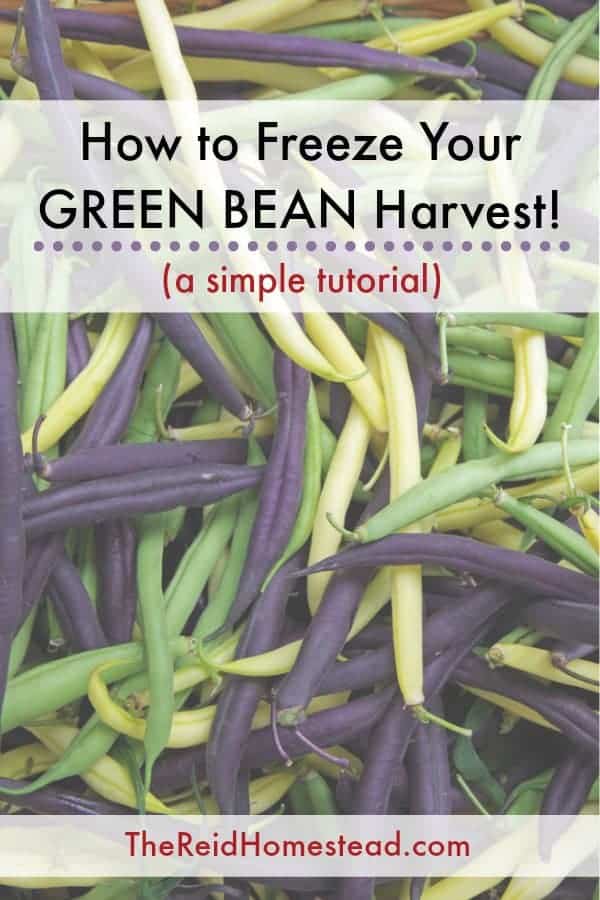
Leave a Reply